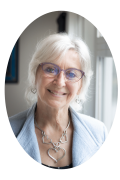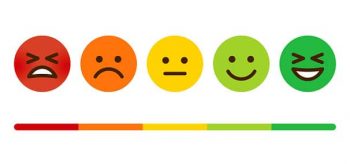The Wellness Wheel
Part 3 - EMOTIONAL WELL-BEING
Our April 2022 newsletter will explore Part 3 the WELLNESS WHEEL, the emotional well-being and how using it can balance your health and life.
Missed Part 1 – Mental Well-Being?
Missed Part 2 – Physical Well-Being?
Warm greetings,
Having all just gone through February, the month of the heart, then a month of March rich in emotions, it seems only fitting to now take a moment to reflect upon the third aspect of the WELLNESS WHEEL – Emotional Well-Being.
The continuing occurence of worldly events has been sure to offset everyone’s emotional balance one way or another. Left unchecked, this imbalance may lead to negative effects not only for ourselves but for our communities as well.
Our article this month asks some important questions about navigating emotions and exploring various ways we can cultivate a better approach to emotional well-being.
All four parts of the Wellness Wheel are interconnected, but let’s remember that emotional well-being is mainly what connects us all, our inner light being fueled by emotions that are bound to ripple across the entire planet.
Blessings of love, health and happiness,


Edna Anne Tunney
President
[email protected]
DISCLAIMER
The wellness wheel is a visual representation of the areas of our Being that come into play when dealing with our overall health.
Wellness requires a holistic approach. All of these areas of life and health overlap and are interconnected like a spider web. Like a tire in a very cold climate, when a segment is out of balance, the compression or imbalance can create a bumpy ride.
It is our hope that you will be inspired to delve deeper into any of the areas.
PART 3
EMOTIONAL WELL-BEING
Written by Stephanie Grozell
In past newsletters we explored the concepts and connections that Mental and Physical elements contribute to our own wellness. In today’s article, Part 3, we will explore these connections from the perspective of our Emotions.

Emotions can be a tricky and challenging subject to broach when applying these perspectives to oneself. They can feel overwhelming or detached, current or longstanding and can be linked to our physical and mental experiences. With this in mind, I encourage you to approach the information and questioning that follows with curiosity, patience and compassion. Kindness with ourselves is key as we begin to explore how our emotions contribute or detract from our own wellness.
Just like other aspects of the wellness wheel, our emotions integrate, link and are affected by the other wheel components. Our mental, physical and emotional bodies are all connected, feeding off of one another to create our current reality. It is through this connected system that we can begin to create positive change within ourselves by bringing attention and awareness to one or each of these pieces.
From early development, we began to explore our world through our own internal understanding. Emotions help us to express and explore in order to understand what is happening to us and how we relate to each occurrence. It is often during this stage in our lives when our relationship with our emotions is formed. This relationship is influenced by the people closest to us during our impressionable years. We are often taught to push our emotions down, criticize them, consider them to be too much or to become easily overwhelmed by them. At this stage though, it is valuable to experience these emotions and begin to understand them as tools for which we can relate to the world around us.
In Chinese Medicine, our emotions are expressions of our internal organ systems which can relate to our external world. Each organ is responsible for the processing and healthy expression of our emotions. The liver relates to anger, the lungs relate to grief, the kidneys relate to fear, the heart relates to joy and the spleen relates to worry or pensiveness. If there are imbalances within these organs, our emotions can also be unregulated and considered a symptom of these internal imbalances.
Balance within our body and our emotions includes experiencing the emotion with awareness, acceptance and curiosity. When we become too attached or overwhelmed by our emotions, or when our emotions are not being expressed and instead are being suppressed, the body is communicating imbalances through the emotional self.

Emotions themselves can also contribute to internal imbalances such as when we experience the loss of a loved one. Our grief can become intense, creating difficulty in taking full breaths thus creating a feeling of heaviness in our chest. If this grief is left unresolved, it can further tax our lungs and create dis-ease or more serious lung conditions.
If we do not express our emotions to move the energy and process our experiences, those internal imbalances that are formed may manifest in our physical body. For example, in Chinese Medicine, anger is the emotion of the liver. When our liver is not supported and functioning optimally, we can experience increased irritability. If those emotions are not expressed or cleared, they can further form into anger or even rage. Consider a person who is clearly enraged. They are often red in the face, making themselves appear larger, getting in someone’s face and/or raising their voice. All these physical traits create an inability for the liver to be in balance. As time progresses and these emotions become held in the body, further deterioration of the liver can occur and one can end up experiencing liver problems later in life.

With curiosity, consider the messages you received from a young age when you had “big” emotions. Were you taught how to allow these emotions to be present? To sit with them and find acceptance for them? Or were you ‘told’ what they meant and how you should handle them? What was that message exactly? Get curious about how you learned to understand your emotions and how did that shape you. What areas of your life do these messages continue to show up in?
Often those messages become so engrained in our psyche that we don’t notice when these same thoughts precede our current emotional experiences. We may first think, “I don’t recognize myself in the mirror” then feel a sense of defeat, grief, or self loathing. Or have the thought, “This day is so beautiful and I am so blessed” followed by a feeling of joy and happiness. What we learn, we often repeat until we become more aware of our thoughts and better able to create new patterns within our mind.
It can seem insurmountable to tackle our emotions, at times, especially if we have been suppressing them for all our life. There may be fear around what power those emotions may have over us. Often our emotions are linked to past traumatic experiences which are stored in our cellular memory. However, because our thoughts precede our emotions and our awareness of them can be practiced and developed, our approach to mindfulness can help us understand and embrace our own power once again.

Consider where emotions show up for you. Do they at all?
What are your patterns of thoughts and behaviours in relation to your emotions? When we do not allow certain emotions into our lives, we are blocking the rest. Where might you be suppressing your emotions?
How can you embrace emotions with curiosity and compassion?
They will allow you to experience your life in a brighter, more enriched and joyful way. How can you embrace them to bring yourself back towards wellness?
Other ways to work with these emotions include alternative therapies. Acupuncture, Reiki, Emotional Freedom Technique (EFT) or Massage, to name a few, can work to help the body clear the trauma, move through the emotions and support the affected internal systems. Working with frequency therapy can also help the cells to release the trapped energy, tune and optimize their own resonance. Additionally, this can lead the way on the path of healing while working with forgiveness, self love and self- acceptance.
Through awareness of our emotions, the connection to our thoughts and how they show up in our bodies, we can become better able to affect positive change throughout the whole system of our health and bring more wellness into our lives. I invite you to sit with yourself often, to attend to your thoughts, to care for your body and to support your system in returning to wholeness. How we care for ourselves in these moments will reverberate throughout our life and be seen within the many levels of the wellness wheel.

STEPHANIE GROZELL
R.Ac, CYT , & CPI
ABOUT THE AUTHOR
Stephanie Grozell is a registered acupuncturist, yoga and Pilates instructor on Vancouver Island. In her work, she takes a special interest in supporting her clients in accessing, processing and managing their emotions through the use of Acupuncture and the system of Traditional Chinese Medicine.
In addition to her acupuncture practice, Stephanie was previously a support representative at Resonant Light Technology. Her work has been greatly informed and supported by her time at Resonant Light and the clients she connected with.
In her free, time Stephanie is a stepmom to a 7 year old son, enjoys expanding her hobby farm of chickens and gardens with her partner and has recently taken on the role of dog parent to a beautiful and rambunctious shepherd mix puppy. They all enjoy living in British Columbia and staying connected to the land and nature.

RECOMMENDED FREQUENCY SETS FOR
EMOTIONAL WELL-BEING
*Any frequency sets that are not already in the ProGen II are available upon request.

RELATED LITERATURE
Dr. Gabor Mate. When Your Body Says No
Dr. Paul Persall. The Heart’s Code
Dr. Bradley Nelson. The Emotion Code
Dr. Norman Doidge. The Brain’s Way of Healing
Louise Hay. You Can Heal Your Life
Dr. Mary Helen Hensley. Understanding is the New Healing

